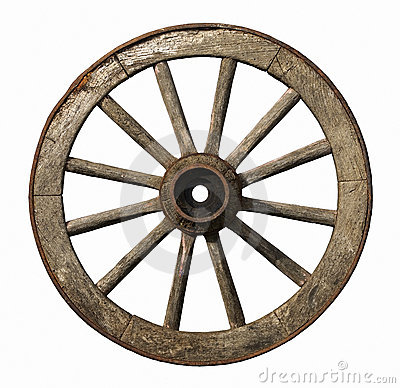While basic as it may seem, the wheel is regarded as the man’s greatest invention that has changed our lives in a significant way. No wonder, it is the foundation of movement. Bicycles, carts, trains, and cars, all use wheels. Even airplanes that travel through the air requires wheels for their take-off and landing. Those generators that create electricity, machinery that produces commodities, and most gadgets that we use in everyday life would not function without a wheel.
With its value, you might think that the inventor of the wheel may have earned momentous praise and fortune. However, truth to be told, no one even knows who invented this incredible tool. The first wheel-and-axle was created around 4500 BC, which may have possibly served as a potter’s wheel.
The wheel was then applied for different uses, specifically for chariots and wagons. For a long time, sledges were utilized for dragging hefty loads. But, there came the point that people realized that having logs place underneath the sledges allowed more effortless movement.
Placing a wheel instead has been the expansion of the earlier idea. The initial forms of carts used solid, heavy wheels that were attached to an axle, which means that wheel-axle combination move or turn simultaneously. Britain’s oldest known wheel was date around 1350 and 950 BC.
But, soon enough, people discovered how to use a wheel that turns or moves around a fixed axle. First created in 2000 BC, wheels with spokes allowed lighter and faster movement. They were employed in chariots and carts, hauled by horses and oxen.
Craving for improvement, people continued to find other significant uses of the wheel, powered by humans, animals, and even by natural forces, such as flowing water or wind. Wheels powered by foot were created in 500 BC, waterwheels were created 1000 BC, while windmills appeared in the seventh century AD.
For thousands of years, these windmills and waterwheels helped power machines used for flour production and in cotton mills, aid in irrigating crop fields and eliminating water from flooded sections, and also became handy for hammers and bellows in metal shops.
More massive carts and wagons were continued to be used. However, wheels sank into the ground when it became wet after rain. Thus, making it difficult to drag heavy freight on such a surface. This then led to the creations of streets and roads. Light carriages were also produced. In the mid-17th century AD, people started to travel 30 miles a day at most using horse-drawn carriages.
Roads continued to improve, allowing better speed possible and required better wheels that can turn faster and more seamlessly. A ‘competition’ began between the roads and the wheel. Fortunately, steam-engine and motor-cars were invented and allowed faster methods of transportation. The speed of motor-cars was deemed incredible in a world brimming with horse-drawn carriages.
Roads were enhanced further using cement, bitumen, or concrete on their surfaces. Wheels had to catch up with the progress. At the tail-end of the 19th century, solid rubber tires were still used for the wheels of motor vehicles. In 1888, however, air-filled pneumatic tires were invented and further improved the value of wheels as a significant invention. It provided comfort as the air in the tires served as a cushion and shock absorber. Plus, combining them with metal and thinner spokes made them remarkably lighter.
The invention of ball-bearings followed suit, which gave durability to the wheels at high speeds. As wheels turn, ball-bearings roll and reduce the friction along axle-ends and wear-and-tear.
For trains and trams, wheels were used on steel rails to avoid the breakage of ordinary roads. Wheels were also then employed to many new models of cycles, cars, and even on aircraft, wherein wheels helped achieve smooth take-off and landing.
While it may seem pretty basic, the wheel is the greatest invention of time. No other tool has significantly helped humans conquer distance and reach destinations they have never been before. This, in turn, also allowed people to discover new things or resources in other places, which also gave birth to different other inventions. No doubt that we owe much to the nameless mastermind behind the invention of the wheel.
More readings:
- Wheel (Wikipedia)
Related posts:
- Which has been the longest and heaviest freight train on record?
- Why do dogs run behind cars and bikes?
- How does a petrol-electric hybrid car that uses regenerative braking work?
- How much CO2 does a passenger car emit per kilometer traveled?
- List of question-answers related to Inventions
- Who is the actual inventor of electric light bulb, if not Thomas Edison?

